Transforming your home into a serene sanctuary can be an exhilarating journey, and Feng Shui offers the perfect roadmap to achieve this harmonious balance. Whether you’re just dipping your toes into the world of interior design or are a seasoned decorator seeking fresh inspiration, our “11 Gorgeous Feng Shui Tips For Home Interiors” are tailored to elevate your space with ease and elegance.
Incorporating these time-tested principles not only enhances the aesthetic appeal of your home but also cultivates a nurturing environment that promotes well-being and prosperity. With each carefully curated tip, you’ll uncover the secrets to optimizing energy flow, unlocking a sense of tranquility and joy in your surroundings that’s both tangible and transformative.
Let this guide be your trusted companion, empowering you to make confident design choices that resonate with your personal style and aspirations. As you explore these techniques, you’ll discover the rewarding satisfaction of a home that not only looks beautiful but also feels rejuvenating, ensuring every room becomes a haven of peace and positivity.
Optimize Entryway for Positive Energy
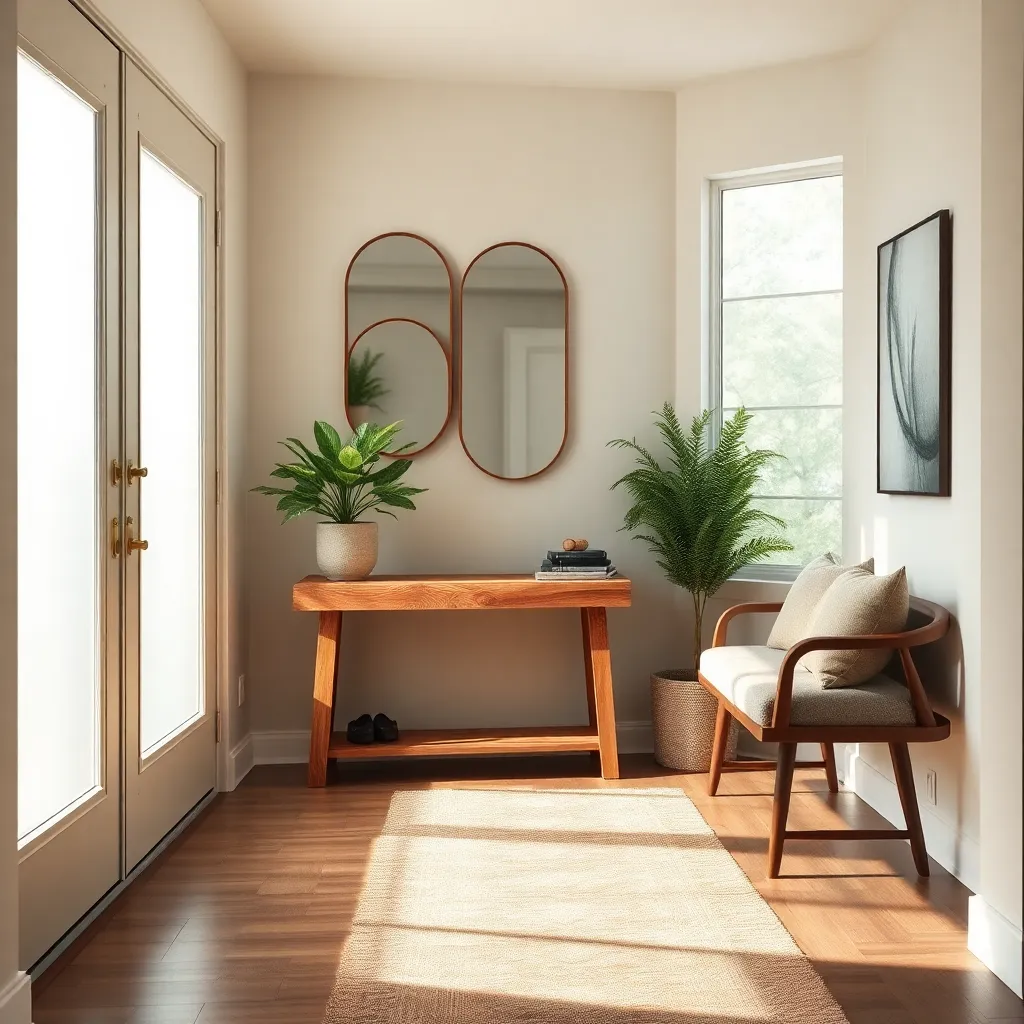
To optimize your entryway for positive energy, start by ensuring it’s clutter-free and inviting. Clear pathways allow energy, or Chi, to flow smoothly into your home, setting a positive tone for the entire space.
Consider incorporating a small console table to anchor the space while providing a place for keys and mail. Choose one with a sleek design and natural materials like wood or stone to promote a sense of calm and stability.
Lighting plays a crucial role in enhancing your entryway’s ambiance. Opt for warm, welcoming light fixtures such as a chandelier or sconce that cast a soft glow, making the space feel warm and inviting.
For a splash of color, add a vibrant rug or runner that complements the overall color scheme of your home. Earthy tones or shades of red and orange can stimulate energy, while blues and greens offer a calming effect.
Arrange Furniture to Enhance Flow
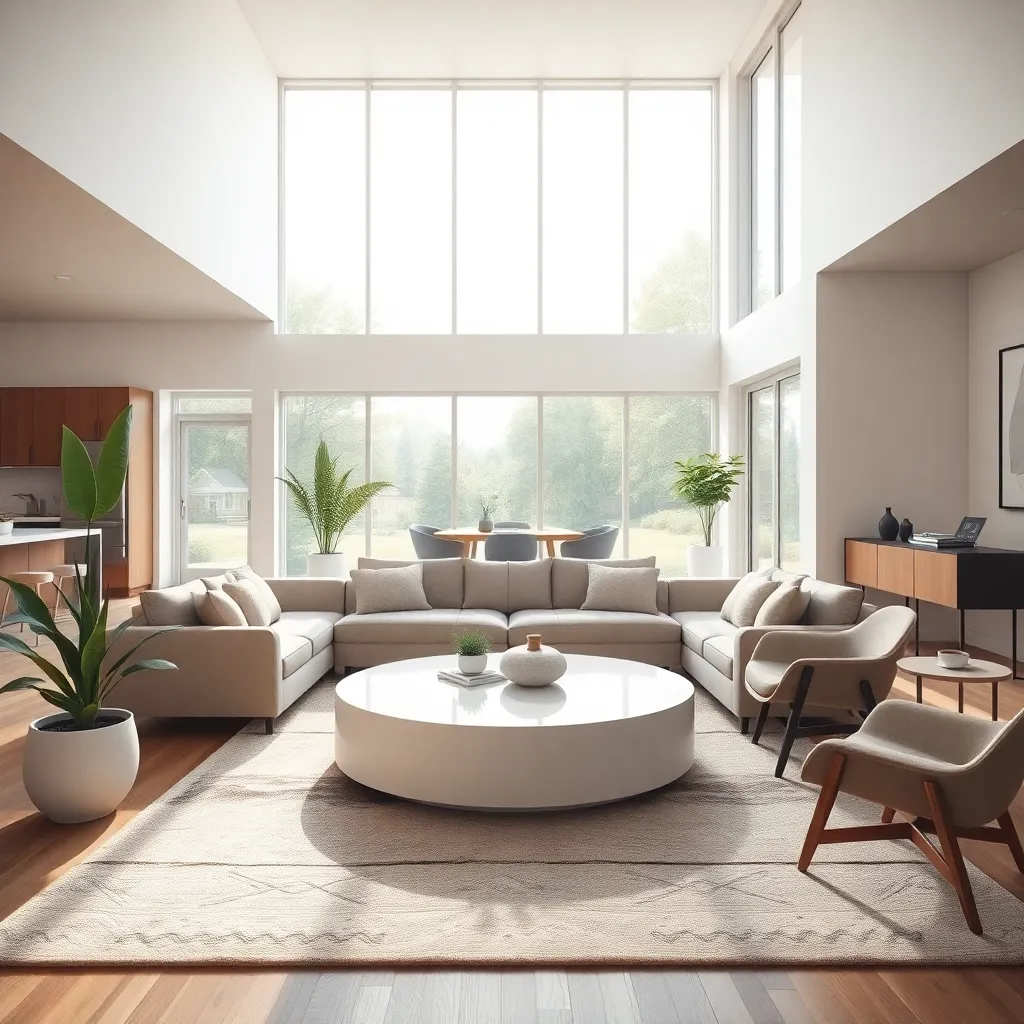
To enhance the flow in your home, start by considering the function of each room and how you move through it. Place larger furniture pieces like sofas and beds against walls or in corners to open up pathways and allow for easy movement.
Visual balance is crucial in creating a harmonious space. Try pairing a bold, colorful armchair with a neutral-toned couch to keep the room lively yet cohesive.
When arranging furniture, think about the natural light and how it enters your space. Position seating areas near windows to take advantage of daylight, and use mirrors to reflect light and create the illusion of more space.
For a seamless look, choose furniture with similar lines and materials. A mix of wood and metal can add character, while sticking to one or two color schemes helps maintain a sense of unity across the room.
Incorporate Natural Elements Indoors
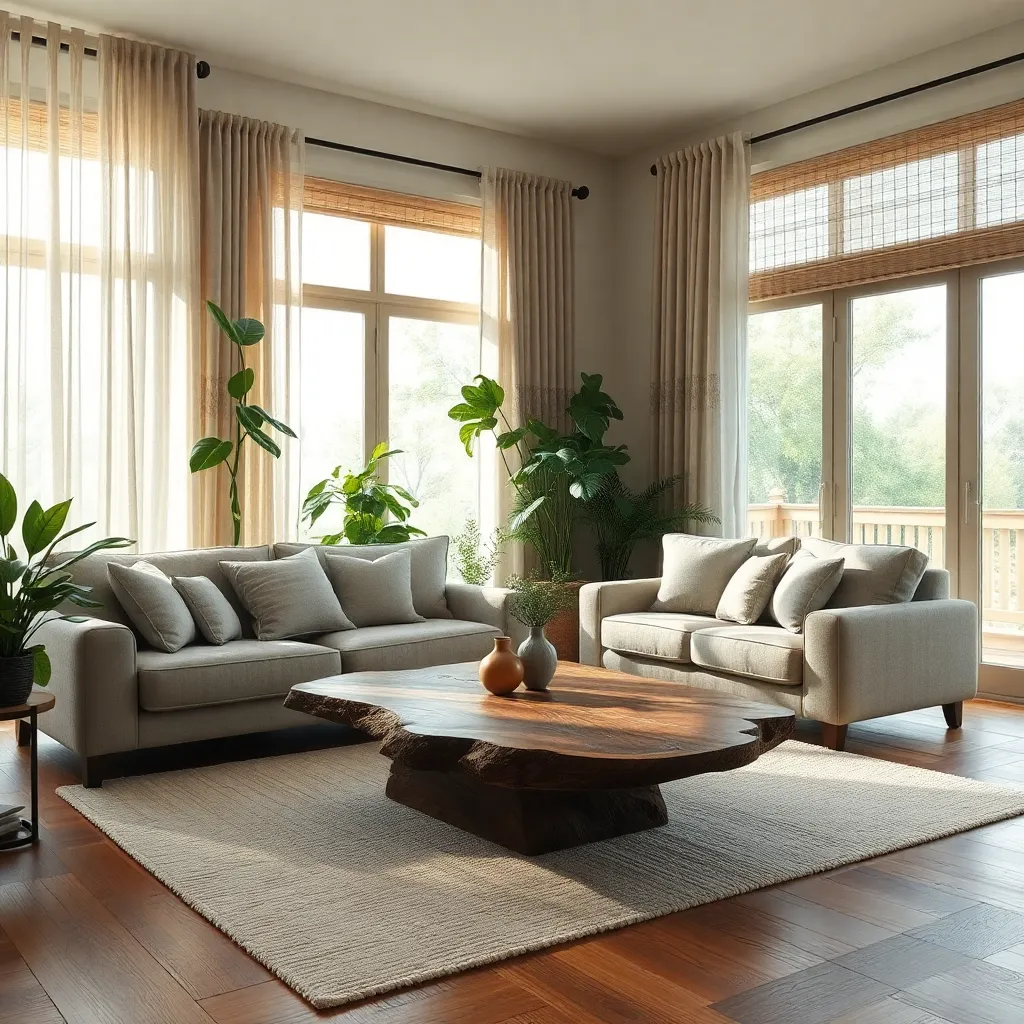
Bringing natural elements indoors can significantly enhance the harmony of your space, aligning perfectly with Feng Shui principles. Start by introducing houseplants like snake plants or peace lilies, which not only purify the air but also add a refreshing green touch to your home.
For a more advanced approach, consider incorporating wooden furniture or accents that resonate with the earth element, promoting stability and comfort. Opt for materials like bamboo or reclaimed wood, which offer sustainability and a timeless appeal.
Another simple yet effective method is to use natural fabrics such as linen or cotton for your curtains and upholstery. These materials are breathable and contribute to a serene and inviting atmosphere, making any room feel more connected to nature.
Finally, consider using stones or crystals as decorative elements to balance the energy in your home. Arrange them strategically in corners or near windows to enhance the natural light and create a soothing, grounded environment.
Position Beds for Restful Sleep
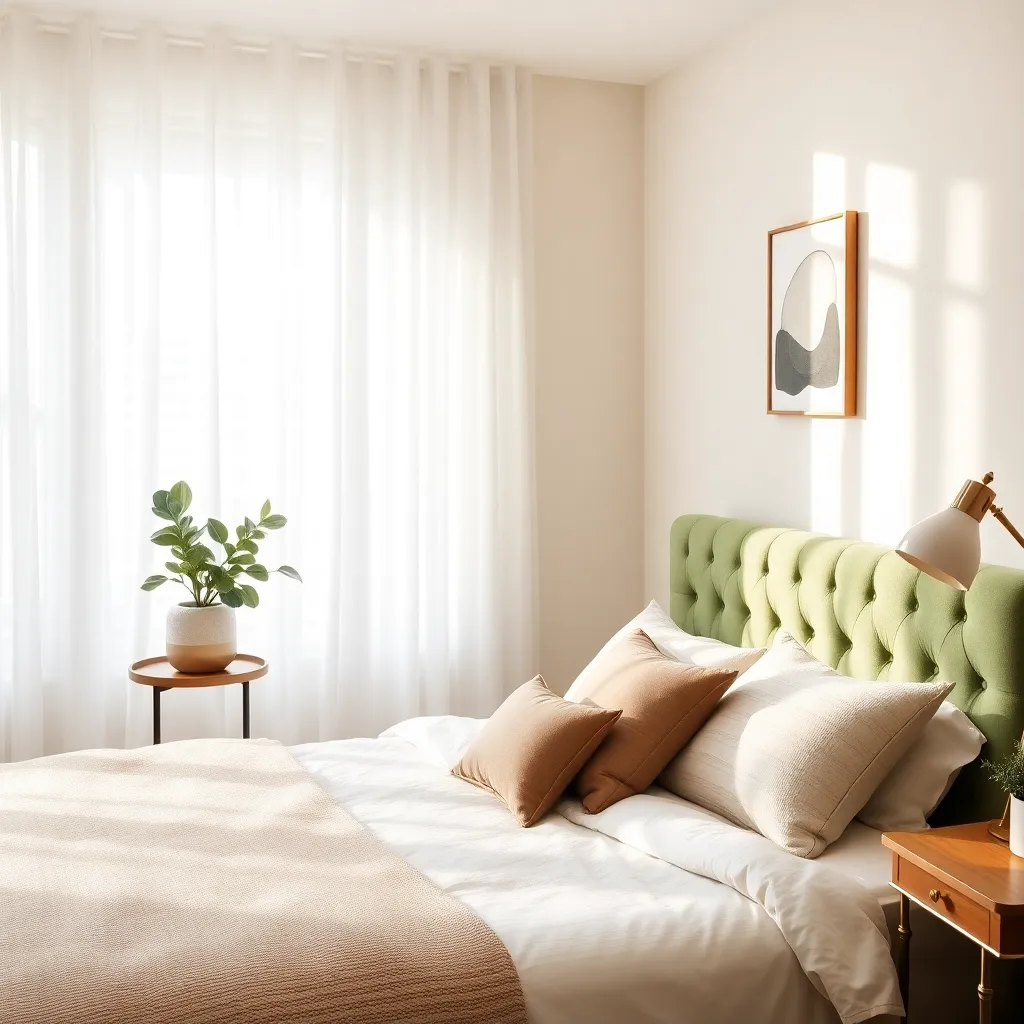
To create a restful sleeping environment, place your bed in the command position, which means it should face the door without being directly in line with it. This positioning allows for a clear view of the entrance, offering a sense of security and control, essential for a peaceful night’s sleep.
Avoid placing your bed under a window, as this can disrupt the energy flow and lead to disturbed sleep. Instead, opt for a solid wall behind your bed, providing support and stability, akin to the grounding effect of a mountain behind you.
When selecting a bed, choose one with a solid headboard, as this symbolizes solid support in life. Wooden headboards are particularly recommended for their natural, grounding qualities, which enhance the serene atmosphere of your bedroom.
If space allows, ensure there is equal space on either side of the bed to promote balance and harmony in your relationship. This setup also facilitates easy access and creates a symmetrical look, which is visually pleasing and energetically balanced.
Use Mirrors to Reflect Light
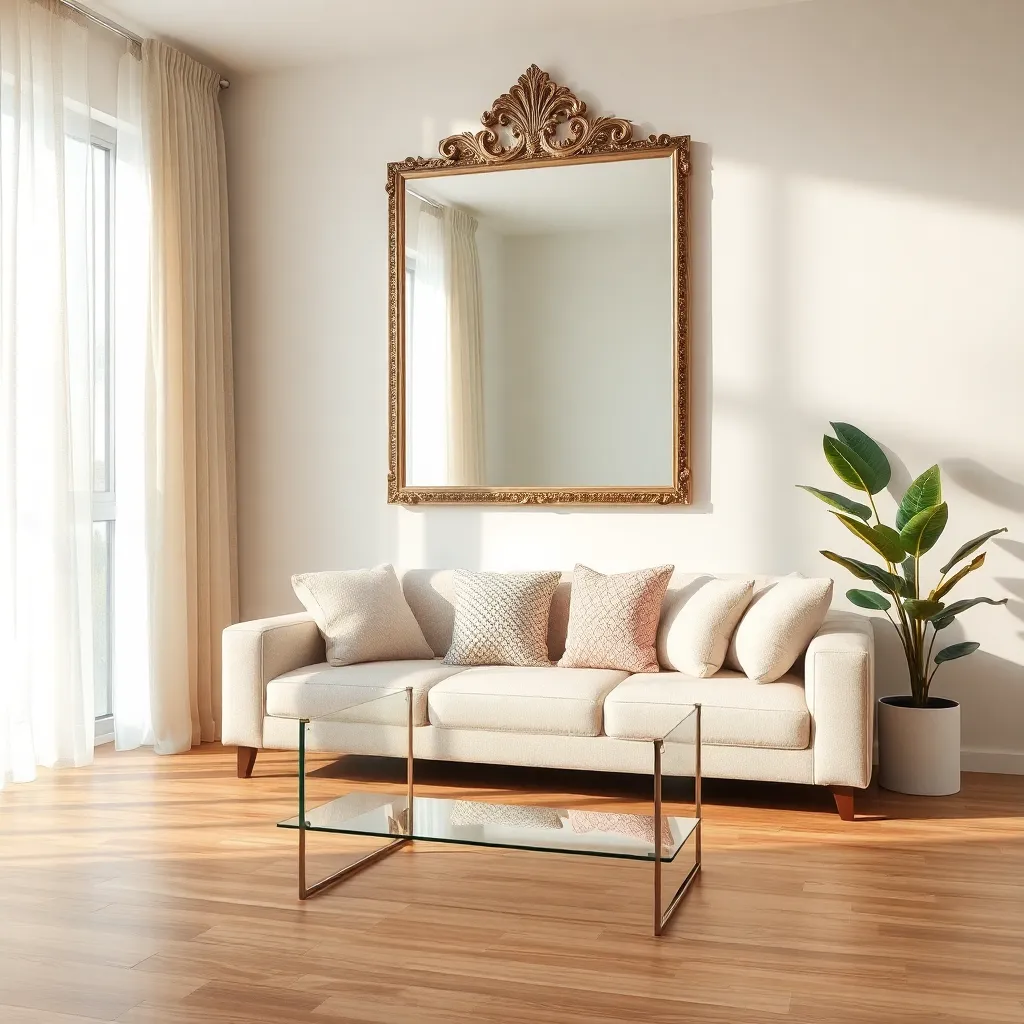
Bringing mirrors into your home can significantly enhance natural light, making your space feel brighter and more inviting. To maximize this effect, position mirrors directly across from windows or other sources of natural light. This simple placement trick can amplify the light in your room by reflecting it further into the space.
For a stylish and functional addition, choose mirrors with decorative frames that complement your existing decor. A large mirror with a wooden or metallic frame can become a stunning focal point while enhancing the room’s illumination. Consider the style of your home—modern spaces may benefit from sleek, frameless mirrors, while traditional homes might shine with ornate designs.
Placement is key when using mirrors to reflect light; ensure they are at eye level for the best visual impact. Hanging mirrors too high can diminish their effectiveness and disrupt the harmony of the room. For those with limited wall space, opt for mirrored furniture like a console table or sideboard to subtly increase brightness.
Advanced decorators can experiment with mirror groupings or gallery walls using mirrors of varying shapes and sizes. This technique not only reflects more light but also adds a dynamic artistic element to your home. Remember, the goal is to balance functionality with aesthetics, creating a space that feels both expansive and cohesive.
Select Colors for Emotional Balance
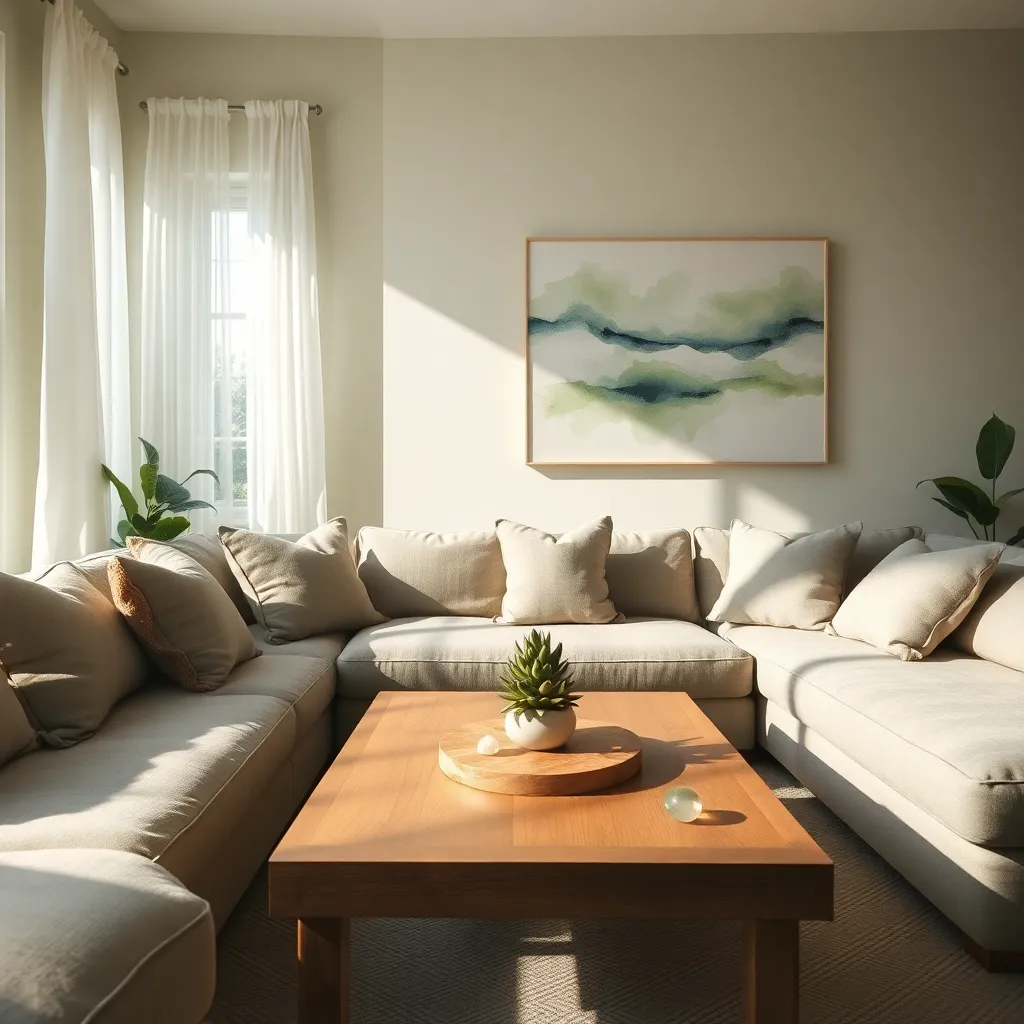
Choosing the right colors for your home is essential for achieving emotional balance. The color palette you select can significantly influence the mood and energy within a space, making it crucial to choose wisely.
For a tranquil environment, consider incorporating shades of blue and green, known for their calming properties. These colors work well in bedrooms and living areas, providing a serene backdrop that encourages relaxation and peace.
To energize a room, opt for bolder hues like red or orange, but use them sparingly to avoid overwhelming the senses. Accent walls, cushions, or artwork are excellent ways to introduce these vibrant colors without overpowering the space.
Neutral tones such as beige, taupe, and soft grays can create a harmonious base, offering versatility to complement any accent color. These shades are perfect for larger surfaces like walls or floors, setting the stage for a balanced and cohesive interior.
Declutter Spaces for Clarity
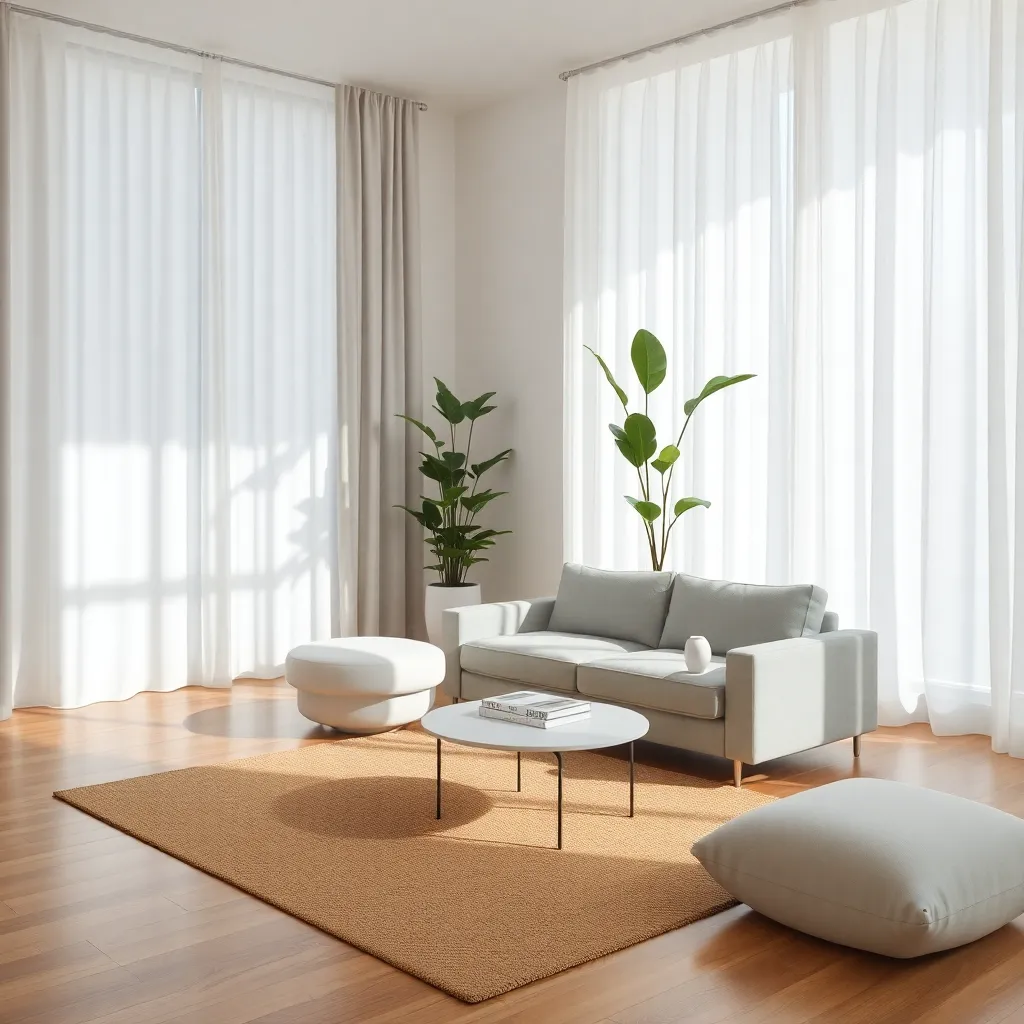
Creating a clutter-free environment is essential for fostering clarity and tranquility in your home. Start by evaluating each room and identifying items that do not serve a purpose or bring joy, as these can create unnecessary mental and visual noise.
Consider implementing a minimalist approach by selecting furniture pieces that are both functional and stylish. Opt for multi-purpose furniture, such as ottomans with hidden storage or a sleek console table with drawers, to maintain a clean and organized look.
For color schemes, choose calming and neutral tones that promote serenity and focus. Soft whites, gentle grays, and muted pastels can enhance the feeling of spaciousness and reduce visual distractions, making them excellent choices for decluttered spaces.
Advanced decorators can experiment with layering different textures to add depth without clutter. Incorporate materials like linen, wool, and natural wood to create a harmonious and inviting atmosphere, ensuring that each element complements the overall design without overwhelming it.
Enhance Living Areas with Plants

Incorporating plants into your living areas can enhance both the aesthetic and energy of your home. Choose plants like the peace lily or snake plant for their air-purifying qualities and ease of care, making them perfect for beginners.
To create an inviting atmosphere, consider placing a large, leafy plant in a corner to soften the room’s edges. Pair plants with decorative pots that complement your existing color scheme, such as ceramic pots in earth tones for a natural feel.
For a more advanced approach, experiment with vertical gardening by using wall-mounted planters to save space and add visual interest. Mix various plant types and textures, such as ferns and succulents, to create a dynamic, layered look that elevates your space.
Strategically placing plants near windows can optimize natural light, which not only benefits the plants but also enhances the room’s ambiance. Remember to rotate your plants regularly to ensure even growth and maintain their health. Embrace the versatility of plants to bring a refreshing and balanced energy into your living areas.
Balance Elements in Every Room
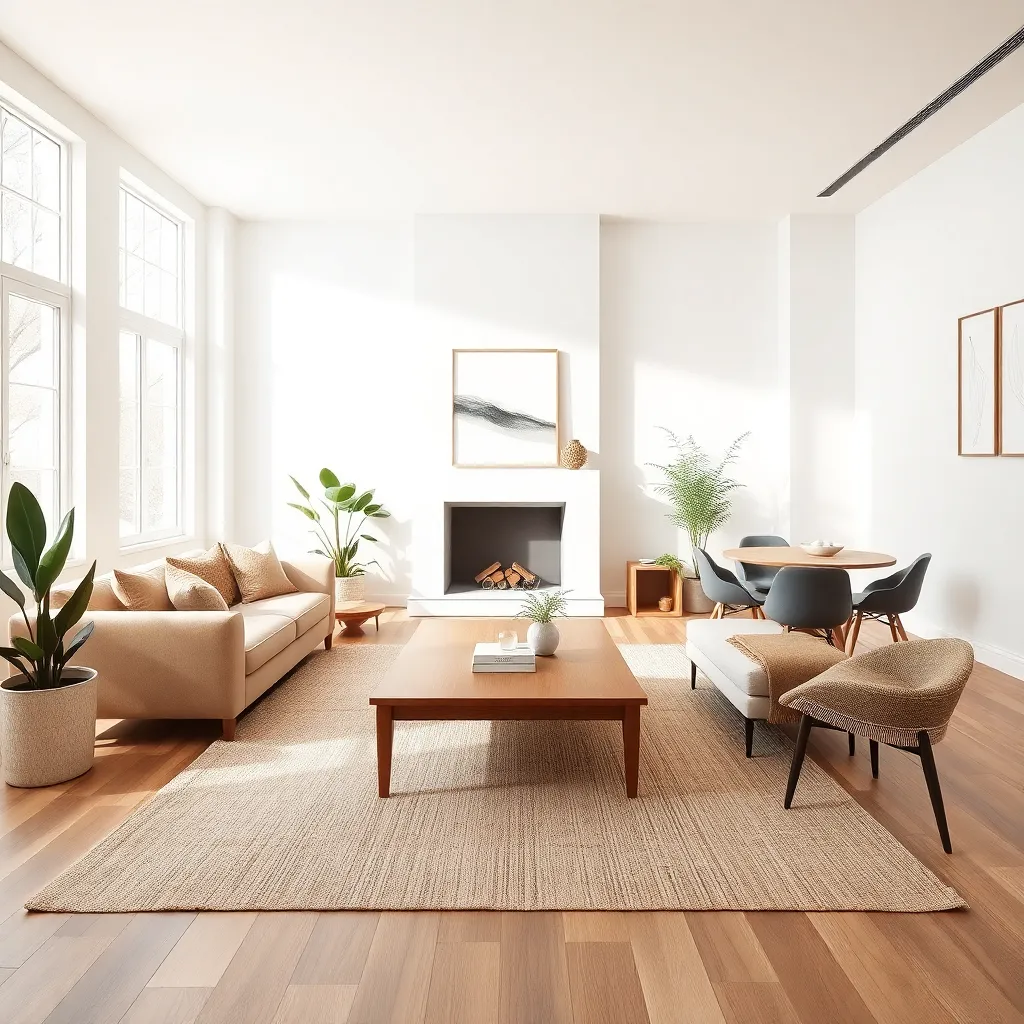
Creating balance in every room is essential for a harmonious home environment. Start by ensuring that your furniture is proportionate to the room size; oversized furniture can overwhelm, while pieces that are too small may feel lost in larger spaces.
One effective technique is the symmetrical arrangement of furniture and decor. Place matching lamps on either side of a sofa or bed to achieve a visually pleasing equilibrium.
Consider color balance by incorporating a mix of warm and cool tones. Use a neutral base and add pops of color through accessories like cushions, throws, or artwork to harmonize the space.
Advanced decorators can play with textures to create balance without altering the color scheme. Mix materials such as wood, metal, and fabric to add depth and interest, ensuring that no single element dominates the room.
Choose Artwork with Positive Themes
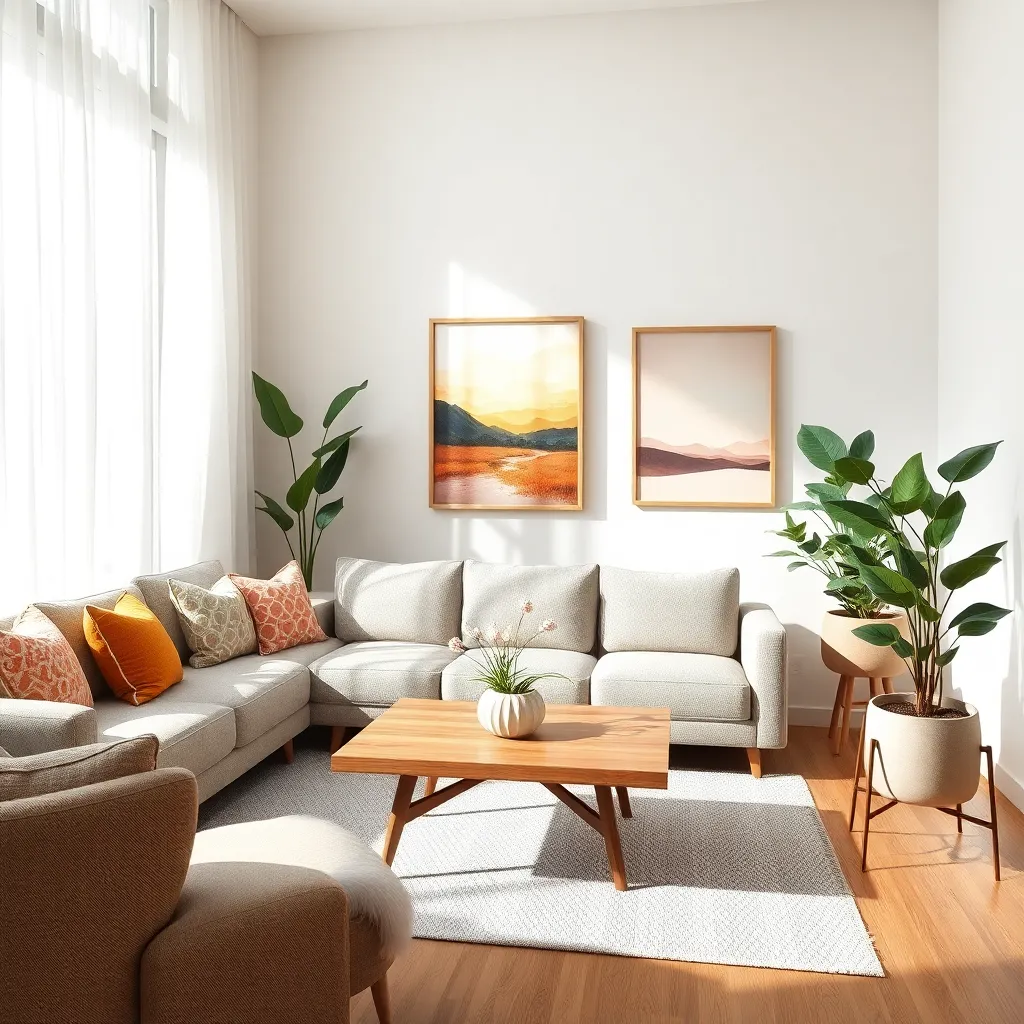
Incorporating artwork with positive themes into your home can significantly enhance the energy of your space. Choose pieces that evoke feelings of joy, serenity, or inspiration, such as landscapes, abstract art in warm tones, or uplifting quotes. These selections can serve as daily reminders to maintain a positive mindset.
When selecting artwork, consider the room’s purpose and how the art can complement that function. For example, in a living room, a large, vibrant piece can become a focal point that encourages lively conversation and interaction. Alternatively, in a bedroom, opt for calming imagery like nature scenes in soft hues to promote relaxation.
Frame your artwork thoughtfully to match your decor and enhance its impact. Use sleek, modern frames for a contemporary look, or rustic wooden frames to add warmth and texture. The right frame can elevate the artwork and ensure it integrates seamlessly into your existing design scheme.
Placement is key to maximizing the effects of positive-themed artwork. Hang pieces at eye level to ensure they are immediately engaging, and consider pairing them with complementary decor elements, such as cushions or throws, to create a cohesive look. Remember, balanced placement can bring harmony to your space, enhancing the overall feng shui of your home.
Maintain a Tidy Workspace
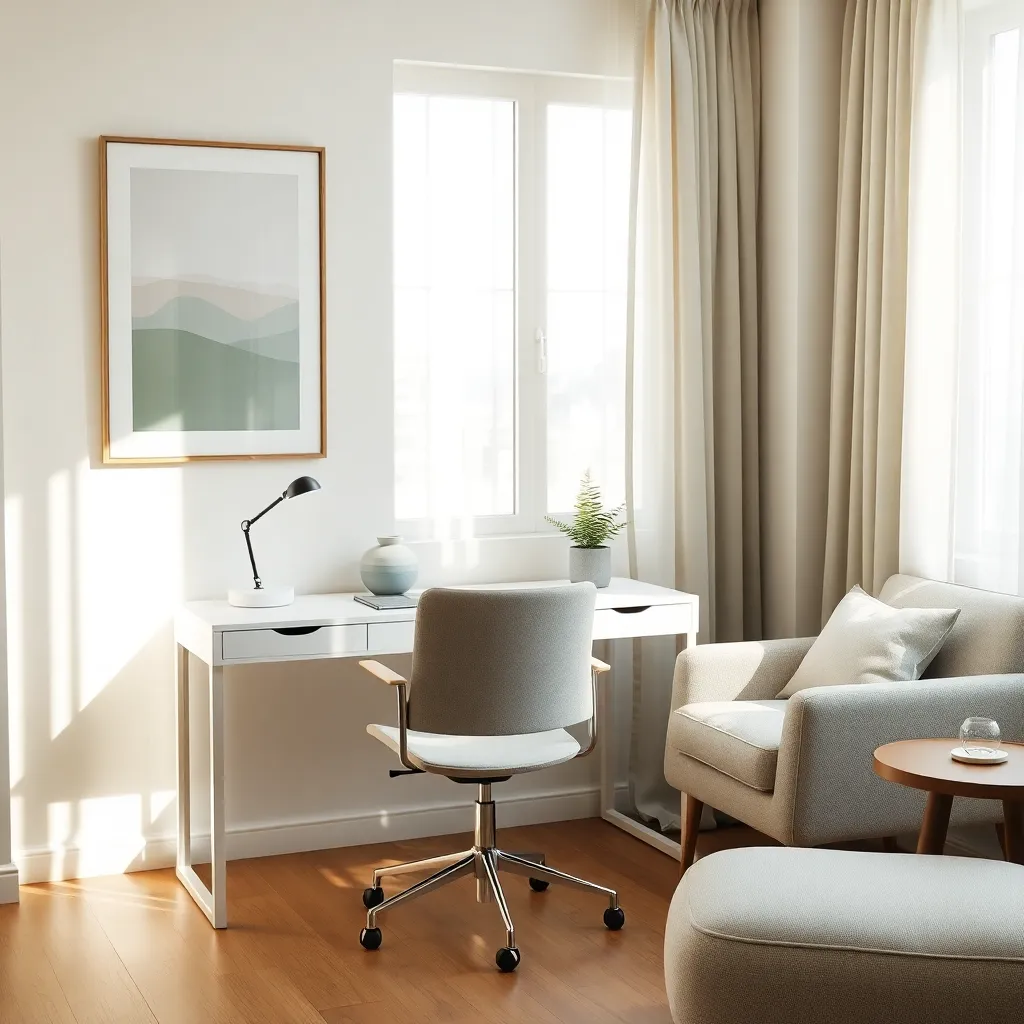
Incorporating Feng Shui principles into your workspace can significantly enhance productivity and focus. Begin by keeping your desk clear of clutter, which allows energy to flow freely and creates a serene environment for concentration.
Position your desk so that you have a clear view of the door, known as the “command position.” This placement helps you feel more in control and aware of your surroundings, fostering a sense of security.
Choose a desk with a solid, sturdy design, preferably made of wood, to ground the space and enhance stability. Opt for a chair that supports your back well and is comfortable enough to encourage long periods of work without fatigue.
For a harmonious color scheme, incorporate soothing hues like soft greens or blues, which can promote calmness and creativity. Accent these colors with warm earth tones or metallics to balance the energy and add depth to the workspace.
To further enhance the positive energy, add a few plants such as a peace lily or a jade plant. These not only purify the air but also symbolize growth and prosperity, aligning with Feng Shui principles.
Conclusion: Growing Success with These Plants
In this journey through the art of Feng Shui for home interiors, we’ve explored 11 transformative tips designed to nurture and enhance your relationships. From positioning your bed to promote harmony, incorporating calming colors, to inviting natural light, each concept serves as a building block for a loving, balanced environment. We’ve delved into the power of decluttering to eliminate negative energy, the significance of round furniture to foster unity, and the use of plants to symbolize growth and vitality. Each tip is a step towards creating a sanctuary that reflects and supports the love and connection within your relationships.
Now, take the next step: choose one of these tips and apply it to your home today. Start small, perhaps by introducing a round mirror to encourage positive chi, and witness the subtle shifts in your relationship dynamics.
Remember, creating a nurturing space is an ongoing journey. Bookmark this article as your go-to guide for future reference, ensuring you remain inspired and empowered to cultivate a loving environment. As you integrate these Feng Shui principles, envision a future where your relationships flourish, grounded in harmony and joy. Take action today, and watch your relationships thrive!
